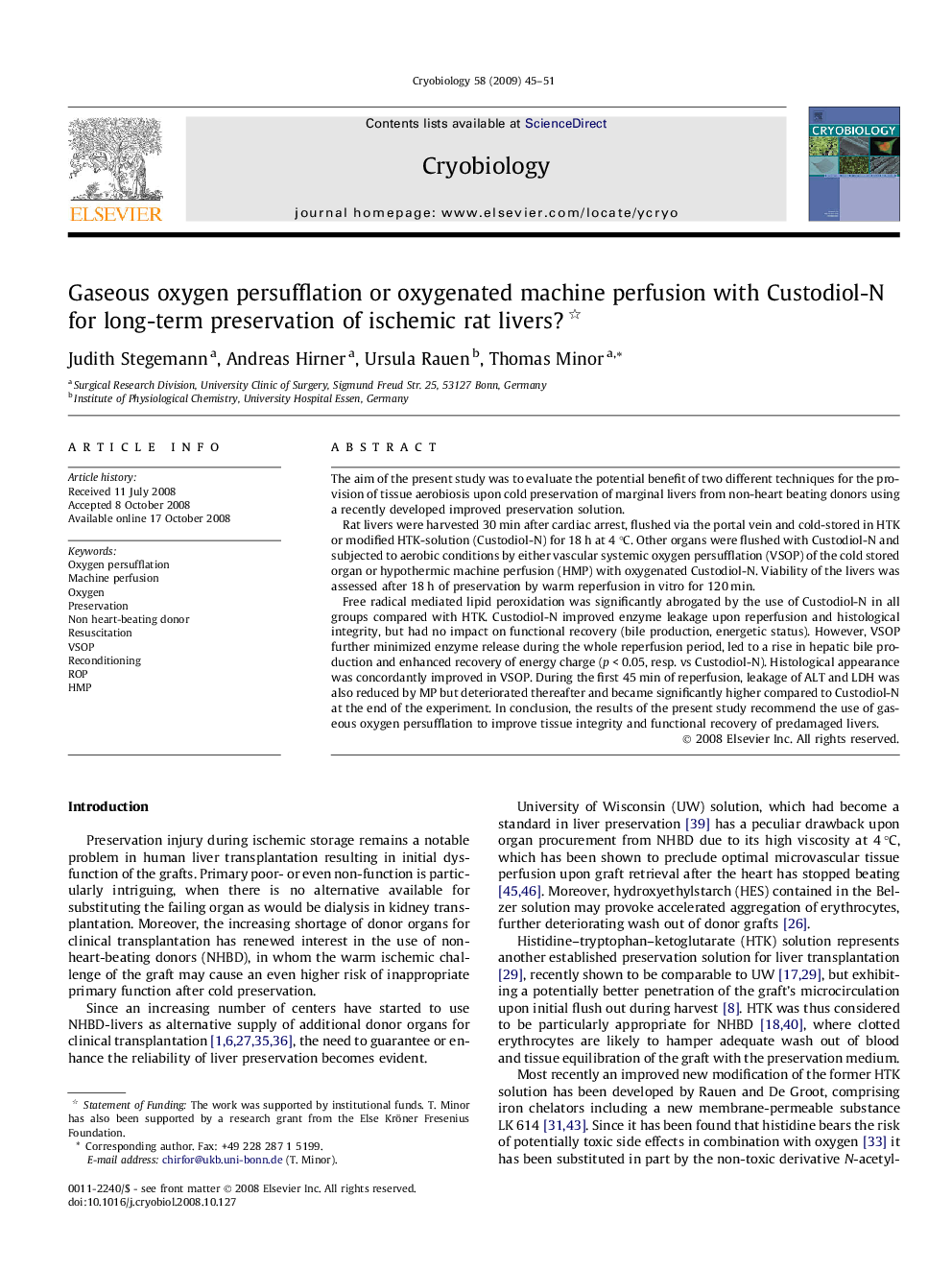| Article ID | Journal | Published Year | Pages | File Type |
|---|---|---|---|---|
| 2169217 | Cryobiology | 2009 | 7 Pages |
The aim of the present study was to evaluate the potential benefit of two different techniques for the provision of tissue aerobiosis upon cold preservation of marginal livers from non-heart beating donors using a recently developed improved preservation solution.Rat livers were harvested 30 min after cardiac arrest, flushed via the portal vein and cold-stored in HTK or modified HTK-solution (Custodiol-N) for 18 h at 4 °C. Other organs were flushed with Custodiol-N and subjected to aerobic conditions by either vascular systemic oxygen persufflation (VSOP) of the cold stored organ or hypothermic machine perfusion (HMP) with oxygenated Custodiol-N. Viability of the livers was assessed after 18 h of preservation by warm reperfusion in vitro for 120 min.Free radical mediated lipid peroxidation was significantly abrogated by the use of Custodiol-N in all groups compared with HTK. Custodiol-N improved enzyme leakage upon reperfusion and histological integrity, but had no impact on functional recovery (bile production, energetic status). However, VSOP further minimized enzyme release during the whole reperfusion period, led to a rise in hepatic bile production and enhanced recovery of energy charge (p < 0.05, resp. vs Custodiol-N). Histological appearance was concordantly improved in VSOP. During the first 45 min of reperfusion, leakage of ALT and LDH was also reduced by MP but deteriorated thereafter and became significantly higher compared to Custodiol-N at the end of the experiment. In conclusion, the results of the present study recommend the use of gaseous oxygen persufflation to improve tissue integrity and functional recovery of predamaged livers.
